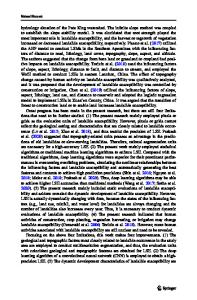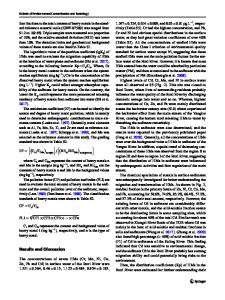Deformation characteristics and reactivation mechanisms of the Outang ancient landslide in the Three Gorges Reservoir, C
- PDF / 19,834,422 Bytes
- 16 Pages / 595.276 x 790.866 pts Page_size
- 59 Downloads / 339 Views
CASE HISTORY
Deformation characteristics and reactivation mechanisms of the Outang ancient landslide in the Three Gorges Reservoir, China Shi-Lin Luo 1,2 & Da Huang 3 Received: 31 July 2019 / Accepted: 1 May 2020 # Springer-Verlag GmbH Germany, part of Springer Nature 2020
Abstract This paper presents an in-depth analysis of the deformation characteristics and reactivation mechanisms of a giant ancient translational landslide in the Three Gorges Reservoir (TGR) based on more than 6 years of monitoring data with the assistance of in situ surveys. The Outang landslide, divided into three active parts, has a total volume of approximately 90 million m3 and slides along weak interlayers (WIs). Since the impoundment, the landslide has been experiencing persistent deformations with some distinct movement signs. The temporal displacements are marked by seasonal cycles of fast displacements in the summer followed by almost imperceptible movements for the remainder of each hydrologic year. The spatial displacement rates gradually increased with the increase in altitude. The primary triggering factors for slope movement could transition from the drawdown of the reservoir water to the periodic rainfall. The affected areas by the former and latter are mainly concentrated in the front part and the upper part of the slope, respectively. The landslide exhibited a composite push-retrogression-type failure evolution with the fluctuating reservoir levels destabilizing rock masses at the front part of the landslide and the precipitation mainly mobilizing materials in the upper part of the slope. Currently, the landslide is in a state of continuous movement. The toe area and upper part of the landslide should receive high priority for the development of preventative measures. Keywords Three Gorges Reservoir . Ancient landslide . Deformation characteristics . Reactivation mechanisms
Introduction Landslides in reservoir areas have become an increasingly common geological hazard and have created landslide dams, buried residential houses, and posed a huge threat to the natural environment and humam lives (Zhou et al. 2010; Dufresne et al. 2015; Zhao et al. 2018; Cen et al. 2020; Huang et al. 2020; Wang and Wan 2019). However, not until the catastrophic consequence occurred in the Vajont Reservoir in Italy in 1963, did engineers and geologists fully realize the seriousness of reservoirinduced landslides (Crosta et al. 2015; Gutiérrez et al. 2010).
* Da Huang [email protected] 1
School of Civil Engineering, Chongqing University, Chongqing 400044, China
2
Provincial Key Laboratory of Safe Mining Techniques of Coal Mines, Hunan University of Science and Technology, Xiangtan 411100, Hunan, China
3
School of Civil and Transportation Engineering, Hebei University of Technology, Tianjin 300401, China
Reservoir landslides often occurred in slope deposits, soft fractured rock masses having low strength and poor rock quality, and over-dip slopes with weak interlayers (WIs), which are highly sensitive to the changes in hydraulic condition
Data Loading...











